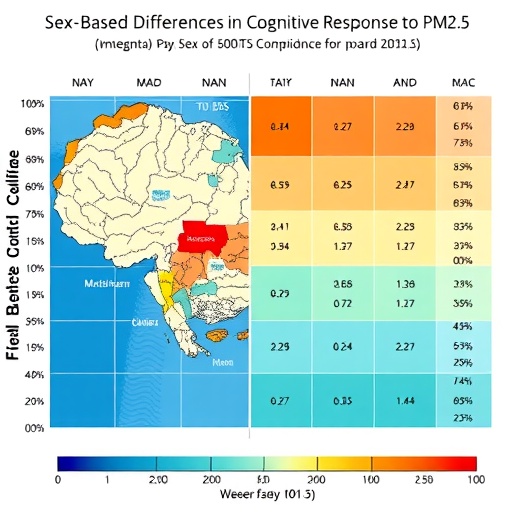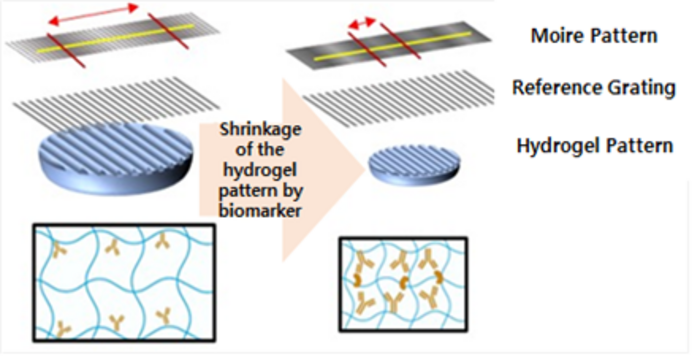
Asian American, Native Hawaiian, and other Pacific Islander (AANHPI) communities are experiencing significant disparities in cardiovascular disease risk, according to recent research presented by the American Heart Association. This groundbreaking analysis examined electronic health records of over 700,000 adults across California and Hawaii, revealing major variations in cardiovascular disease risk factors among different AANHPI subgroups. The findings indicate that the likelihood of experiencing cardiovascular events, including heart attacks and strokes, differs dramatically within these populations, underscoring the urgency for targeted healthcare strategies.
The study’s lead author, Rishi V. Parikh, M.P.H., emphasized that historically, AANHPI populations have often been treated as a single entity in medical research, which obscures the distinct health challenges faced by individual groups. For instance, Native Hawaiian individuals have been shown to face an elevated death rate from cardiovascular issues compared to non-Hispanic whites. Such generalizations can impede the success of public health initiatives aimed at reducing cardiovascular risks. Moreover, the lack of comprehensive research into the diverse backgrounds of AANHPI communities has limited the development of effective prevention programs.
Central to this study was the PANACHE initiative, which analyzed a wealth of health data collected from 2012 to 2022. Participants included individuals identifying as Chinese, Filipino, Native Hawaiian, and various other Southeast and South Asian ethnicities. This focus on specific subgroups allowed researchers to paint a more nuanced picture of cardiovascular health within AANHPI communities, revealing significant variance in key health metrics such as blood pressure, cholesterol levels, and rates of obesity and diabetes.
Statistical analysis from the research offered startling insight; for example, the prevalence of high blood pressure varied from a mere 12% among Chinese adults to a staggering 30% among their Filipino counterparts. This divergence highlights the distinct health profiles within the AANHPI populations, warranting further investigation into the underlying causes, such as environmental influences, lifestyle choices, and genetic predispositions.
Obesity statistics within the study were similarly noteworthy. The inquiry revealed that rates of obesity ranged from 11% in Vietnamese individuals to an alarming 41% among Native Hawaiians and other Pacific Islanders, categorized based on different Body Mass Index (BMI) thresholds suited to various cultural backgrounds. This tailored approach aligns with World Health Organization criteria and accentuates the importance of culturally relevant metrics in health assessments.
Type 2 diabetes was another compelling focus of the research, with prevalence rates spanning from 5% in Chinese participants to 14% in Native Hawaiian/Pacific Islander groups. This disparity further emphasizes the necessity for healthcare providers to recognize and address the complex interplay of factors contributing to health disparities among AANHPI communities. Smoking habits were similarly analyzed, indicating that 13% of Native Hawaiian/Pacific Islander individuals identified as smokers, a potentially critical factor influencing cardiovascular health.
In terms of cardiovascular disease risk, the study employed the American Heart Association’s PREVENT risk calculator to evaluate ten-year predicted risks across the studied groups. Findings showed that Native Hawaiian and Pacific Islander adults not only faced the highest predicted risks but that Filipino, South Asian, and other Southeast Asian populations also demonstrated notable elevated risks compared to non-Hispanic whites. Such indicators serve as a clarion call for more personalized healthcare strategies aimed at these high-risk populations.
The researchers noted the importance of ongoing monitoring of risk factors as a proactive approach for early detection and prevention of cardiovascular disease among AANHPI individuals. Regular health screenings could serve as a vital intervention, promoting timely lifestyle adjustments and medical interventions that may significantly reduce cardiovascular morbidity and mortality.
Future iterations of the PANACHE study are set to explore even deeper into the social determinants of health that play a role in cardiovascular risk among AANHPI communities. Data regarding variables such as immigration history, employment status, experiences with discrimination, and access to healthcare services may provide invaluable context to the raw health statistics derived from existing electronic health records. Understanding these contextual factors is crucial for devising effective interventions and fostering health equity across diverse subpopulations.
The implications of this research extend beyond immediate health concerns, touching upon broader societal issues embedded within healthcare access and cultural understanding. As the AANHPI population in the United States continues to grow, addressing the unique health needs of these communities becomes increasingly essential for ensuring their well-being and longevity. To aid in combating cardiovascular health disparities, targeted outreach and education efforts must be tailored to individual groups, taking into consideration cultural and linguistic nuances that influence health behaviors and attitudes toward preventive care.
As cardiovascular disease remains a leading cause of death nationwide, comprehensive research and heightened awareness about the distinct cardiovascular risks faced by specific ethnic groups will enhance public health responses. The call to action from this research urges both healthcare professionals and policymakers to prioritize detailed population studies that espouse inclusivity and representation in the medical literature for all ethnic groups.
Thus, understanding the complex landscape of cardiovascular risk factors in Asian American, Native Hawaiian, and Pacific Islander populations may facilitate more effective healthcare strategies that resonate with the unique needs of diverse communities. The presentation of these findings contributes to a growing body of literature advocating for personalized healthcare solutions aimed at mitigating cardiovascular health disparities and fostering greater equity within the medical system.
While the current research provides an invaluable starting point, it also highlights the pressing need for continued investigation into the factors contributing to cardiovascular disease risk in AANHPI populations. As such, the PANACHE study invites a renewed commitment to research that prioritizes the health and well-being of all Americans, particularly those whose specific health profiles have historically gone underrepresented and underserved.
Active engagement in these initiatives not only empowers AANHPI populations to take charge of their cardiovascular health but also fosters a more inclusive healthcare system capable of responding to the diverse needs of all community members.
Ultimately, as the U.S. healthcare landscape evolves, ongoing research will be pivotal in shaping effective public health policies and interventions tailored to the unique challenges posed by various demographic groups, striving towards a healthier future for everyone.
Subject of Research: Cardiovascular Disease Risk Factors Among AANHPI Populations
Article Title: Disparities in Cardiovascular Disease Risk Factors Among AANHPI Communities
News Publication Date: March 6, 2025
Web References: American Heart Association
References: Not applicable
Image Credits: Not applicable
Keywords: Cardiovascular disease, Asian American health, Native Hawaiian health, Pacific Islander health, health disparities, obesity, diabetes, health monitoring.
Tags: AANHPI health inequitiesAsian American cardiovascular health disparitiescardiovascular disease prevention programscardiovascular event likelihood in AANHPIelectronic health records analysisethnic variations in heart healthhealthcare challenges in diverse populationsNative Hawaiian stroke risk factorsPacific Islander heart disease researchPANACHE initiative findingspublic health initiatives for AANHPItargeted healthcare strategies for AANHPI






